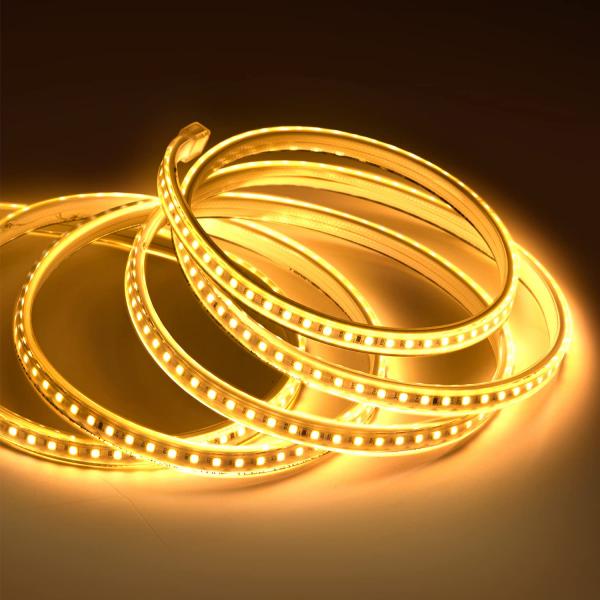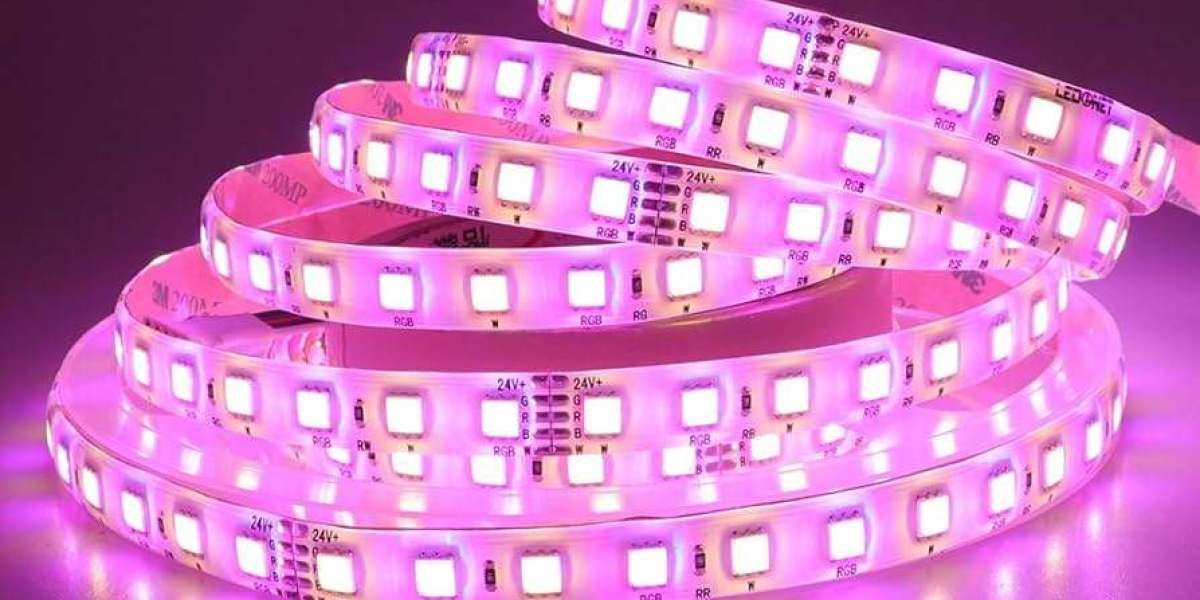Swimming pool lights can create a mesmerizing glow in our pools, but they also require regular maintenance. If the pool light bulbs can be easily replaced, maintenance work will be more convenient and cost-effective. In this guide, we will introduce you to a few common types of LED pool light bulbs, their advantages and disadvantages, and how to choose the best one for your pool.

What are Replaceable Pool Light Bulbs?
Replaceable pool light bulbs consist of light-emitting components (such as LED chips for LED lights), lenses, housings, certain electronic components, and other parts. You can remove them from the pool light by screwing or pressing them in and out. They not only emit light but also determine the power, beam angle, and other parameters of the pool light.
Read more: How Long Do LED Pool Lights Last?
Why Do We Need Replaceable Pool Light Bulbs?
All pool lights can experience various problems during use, such as light decay, water ingress, flickering, etc. Even big brand products with more stable quality and a longer warranty period are no exception. If only the bulb is faulty, replacing the damaged pool light bulb can save a lot of cost and avoid the hassle of removing or reinstalling the entire pool light.
Why Don't Some Pool Lights Have Replaceable Bulbs?
Although replaceable bulbs have many advantages, there is still a large number of LED pool lights that are not designed with replaceable bulbs.
This is mainly due to the following reasons:
Long Service Life
Today, LEDs are the dominant product in pool lighting. The theoretical lifespan of LEDs is more than 50,000 hours, which means they do not need to be replaced or maintained as often under normal use.
Strong Integrability
LEDs can be designed in flexible forms and integrated into different shapes and specifications of pool lights according to needs. Manufacturers have developed various pool lights with unique shapes and size differences according to market demand. However, different manufacturers and different models of LED pool lights have significant differences, making it difficult to adopt a uniform standard.
Read more: Determining the Number of Lights
Low Market Demand
The above reasons lead to much lower market demand for LED bulbs compared to pool lights. Many manufacturers do not design replaceable bulbs for their products because they want to reduce manufacturing costs and minimize the manufacturing process.
Common Replaceable LED Pool Light Bulbs
Although the above reasons lead to a smaller development of replaceable LED bulbs, there are still two specifications of pool light replacements that are more popular in the market.
PAR56
What is PAR?
PAR stands for "parabolic aluminized reflector." It is a lighting product widely used in personal and public lighting fields. PAR bulbs usually consist of light-emitting components (such as LED chips), tempered glass or PC plastic lenses, and parabolic reflectors (used to focus and control the beam angle). Most PAR bulbs are non-removable and fully sealed.
What is PAR56?
PAR56 is a standard-sized circular reflective bulb. The diameter of circular PARs is expressed by the nominal diameter of the reflector in eighths of an inch, so dividing the PAR size by 8 gives an approximate nominal diameter (in inches) of the lamp at its widest point. The diameter (in millimeters) can also be obtained by multiplying the PAR name by 3.175. For example, 56/8 = 7, 56 x 3.175 = 177.8. By calculation, the diameter of PAR56 is 7 inches or 177.8 mm.
In the field of pool lighting, most PAR56 bulbs use LED chips instead of traditional halogen bulbs for their light-emitting components. Many pool light manufacturers have developed LED pool lights based on PAR56 bulbs.
Common PAR Sizes
PAR has several standardized sizes, here is a table of common PAR sizes:
Name Diameter (inches) Diameter (mm) Use Scenarios PAR16 2.5 50.8 Spotlights PAR20 2.563.5 Recessed downlights PAR30 3.7595.25 Track lighting PAR38 4.75120.65 Floodlights PAR46 5.75146.05 Stage lighting PAR56 7 177.8 LED pool lights PAR64 8 203.2 Aircraft landing lights Unique PAR56 Bulbs
PAR56 pool light bulbs have two main designs, one with a parabolic reflector and one without. The bulb with a parabolic reflector is larger in size than the one without a parabolic reflector. However, these two types of bulbs have the same installation standard and can replace each other. Manufacturers also develop unique features for their PAR56 bulbs according to market demand.
For example, some PAR56 bulbs have anti-glare lenses that make the light more even and soft.
Read more: Can you provide a step-by-step guide for installing LED lights on a concrete pool deck?
E27
What is E(ES)?
ES stands for Edison screw, which is an electronic component interface standard developed by "Thomas Edison" and patented in 1881. Bulbs that use this standard have metal bases that can be screwed into bypassed threaded sockets.
What is E27?
The "E" in E27 stands for Edison screw interface, and 27 indicates the diameter in millimeters at the peak of the lower (male) thread.
In the field of pool lighting, the most commonly used Edison interface is E27. E27 and E26 have a difference of 1 mm, but they are compatible with each other.
These pool lights manufactured by Pentair can be replaced with an E27 bulb.
Common Edison Interface Sizes
There are four common types of E interfaces:
- Candelabra holders: They use E12 in North America and E11 in Europe.
- Intermediate meaning light holders: They use E17 in North America and E14 (small Edison screw, SES) in Europe.
- Medium or standard light holders: They use E26 (medium Edison screw, MES) in North America and E27 (Edison screw, ES) in Europe.
- Mogul light holders: They use E39 in North America and E40 (Goliath Edison screw) in Europe.
The Difference between PAR56 and E27 Pool Light Bulbs
PAR56 and E27 bulbs are the most popular types of bulbs in the pool lighting field, but their shape sizes and installation methods are completely different, so they cannot replace each other.
Size Difference
PAR56 bulbs are circular reflective bulbs with a diameter of 7 inches or 177.8 mm. They are usually installed by inserting them into a groove or holder in the pool wall. E27 bulbs are cylindrical screw-in bulbs with a diameter of 27 mm. They are usually installed by screwing them into a socket on the pool light fixture.
Power Difference
Some PAR56 bulbs support a much higher maximum selectable wattage than E27 bulbs, in addition to anti-glare lenses and skeletonized designs.
Summary
The above discusses the types, features, and differences between pool light replacement light sources. We also explain why many LED pool lights do not have replaceable light sources. We hope this content can help you make a wiser choice when selecting pool lights and light source products.
FAQs (Frequently Asked Questions):
Question: Why are LED bulbs the best choice for pool lights?
Answer: LED bulbs offer many advantages such as long lifespan, energy efficiency, low heat production, and a variety of customizable colors.
Question: How long do LED bulbs last in a pool light?
Answer: LED bulbs have a theoretical lifespan of over 50,000 hours, which means they can last for years under normal operating conditions.
Question: Can I use any bulb in my pool light?
Answer: No, it is important to find the specifications and requirements of your pool light and only use bulbs that are compatible with the light.
Question: Which type of bulb is easier to replace, PAR56 or E27?
Answer: It depends on the design of your pool light. If the light uses a PAR56 bulb, it will be easier to replace it with another PAR56 bulb. If the light uses an E27 bulb, you will need an E27 bulb for replacement.









